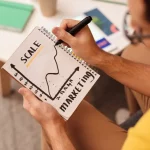Video recording
Audio recording
In this enlightening Non-Profit Digital Success Podcast episode, host David Pisarek welcomes digital marketing guru Chase Neely.
With over a decade of experience, Chase unveils secrets to harnessing the power of digital marketing strategies to bolster your non-profit’s mission.
From mastering SEO to crafting compelling content and automating donor communications, this episode is packed with actionable strategies to elevate your online presence and engage with your audience more effectively than ever.
Mentioned Resources
Episode Transcription
David Pisarek: Ever wondered how to perfectly align your non-profit’s digital marketing strategy with your overreaching mission? Tune into this episode and get all the buzz.
Welcome to NPDS, and today, Chase Neeely is here, seasoned digital marketing strategist with over 11 years under his belt.
Chase opens up the playbook on automating donor emails, building compelling websites, and connecting authentically with audiences online.
Chase, thank you so much for joining in on the episode today.
Chase Neely: Well, thanks for having me. I really appreciate it.
David Pisarek: Yeah. So let’s hop in here. And I guess one of the things that we should maybe be level set is in one or two sentences.
Let’s try to really paraphrase this here. What is digital marketing?
Chase Neely: Oh, gosh. We’ll just start with an easy one, David. That’s good.
Digital marketing, to me, is reaching people online. That’s it. That’s all that it is. I think that we’ve put a lot of colour around it.
But really, what it comes down to is how are you getting in front of the people who need to be changed by the message you’re bearing? That’s what we try to do at Leverage.
David Pisarek: That’s awesome. How do we reach people online? Anybody listening to this episode is probably going, “Well, SEO, blogs, producing content, advertising.” There’s a whole massive industry built around digital marketing, which is where you lay with your agency there. How can we ensure as non-profits, that the digital marketing strategy integrates with the core mission and values?
Chase Neely: It’s so interesting because with digital marketing, there are so many opportunities to get in front of people that it’s almost like, “If I don’t get in front of everybody, I’m not going to get in front of anybody.”
From our perspective, we really want to hone in on what your core message is. You know this as a non-profit, you know what that core message is and who you’re trying to help.
We want to align the keywords that we’re going after, not just from an on-the-nose perspective, but from an intent perspective with the people that you’re trying to reach online. Because, yeah, you can reach everybody.
You can get online and you can run a Facebook campaign and get in front of the entire Facebook, which is basically the entire world.
But if you’re not doing that intentionally, if you’re not doing that with the keywords that are really going to drive people to get to know your non-profit, to get to know your message, to get passionate about it, then what are we doing? We want advocates for the brand.
We don’t want people who are just acquainted with the brand. Acquaintance comes later. Right now, you need advocates, and that’s what we’re trying to do when we build a digital marketing strategy.
David Pisarek: Two things that you mentioned there that I just want to draw a little bit more attention to is advocates. What I would say maybe before advocacy and getting people to share and like and all that is awareness.
Do people even know who you are? People know what you are passionate about, what the problem is that you’re trying to solve.
Chase Neely: Yeah, it’s 100% accurate.
I think that advocacy comes when you build trust over time with people who are aware of you.
They got to trust that you’re actually going to do what you say you’re going to do.
I think non-profits, we all know this, one of the greatest failures is when a non-profit breaches that trust, that they’re going to do what their mission says they’re going to do.
If you can build that trust over time and you can nurture these people, and you can show them the difference that they’re making through supporting your non-profit or just engaging with or intersecting with your non-profit.
If you can show them that and build it over time, that’s how you build advocates. But they got to be aware first. That’s such a good point, David. I think it’s easy for us to say, “Go get advocates.” But if you’re not sure even how to start with awareness, what are we doing?
David Pisarek: The second thing you mentioned was keywords.
Let’s get a little techy, geeky here for a second. Let’s geek out on SEO side of things. I love talking about this stuff.
Keywords. You really need to understand, I think, a couple of things, or at least from my perspective. Correct me if I’m wrong here, Chase. You need to understand who you’re trying to go after, what is motivating them to connect with you.
Then there’s also local. If you’re working in a specific community that you’re in the middle of to do X, Y, and Z, you got to use the city, the village, the town. You need to use that as part of your keyword strategy. What are your thoughts?
Chase Neely: It’s 100% accurate. You got to have the clear intent of what’s going to happen at the end.
What’s the outcome you’re after as you’re looking at keywords? For us, we’ve worked with global non-profits and we’ve worked with local non-profits.
To your point, sometimes it’s about that local SEO. It’s about “What is the non-profit near me that does X?” You want to make sure that you’re the answer to that question on Google.
You want to make sure you’re the answer to that question really everywhere. That’s number one, know what the outcome is.
But number two, you also have to engage with the person, not just on a surface level, and I think we touched on this before, not just on the nose, but also what are they thinking as they’re searching for a way to help the group that you’re helping.
For us, I remember we were working with a global non-profit, and one of the earliest things that we found with their keyword search was people need to know what a migrant is versus an immigrant.
That was the keyword that we needed to go after just to inform. Then you become the trusted source of information.
From that, you build a nurturing funnel that brings people to ownership or advocacy, like we mentioned before. You have to think not just the end on the nose, give money to X non-profit or give money to X cause.
You have to also think, “Well, what do we actually need to inform people of so that they will give money or so that they will support so that they will become advocates?” So, yeah, know the outcome.
That will guide you on local versus global. And then once you get to the global, know what you’re trying to achieve there, too, from an informational standpoint.
David Pisarek: Your point about immigrant versus migrant, that’s really interesting if we think about it through the lens of content.
So is somebody going into Google and actually searching, “What is the difference between immigrant and migrant?” That could be really interesting content.
Create an article around that or a couple of different articles around that over time. You don’t want to do that all at once, right? Spread that out over time.
Leverage Google in your favour in that way. But if we’re thinking about types of content, we’ve got blogs, videos, infographics, there’s probably a number of other types of content that you’re thinking social, whatever.
But let’s talk about on-site. Is there anything specific that has shown to be more effective or engaging or resonate more with non-profit audiences?
Chase Neely: I think the strategy is generally, “Let’s be the best resource on this keyword on the internet.” That should be the standard.
That means that you might have a 2000-word blog post or a 2500-word blog post where you’re given everything you got on migrant versus immigrant.
But you’re also doing a YouTube video, and that YouTube video is going to be embedded on that page as well. But you have the YouTube traffic coming into that page and you have it embedded on that page. You might have an infographic that’s a lead magnet.
All I mean by that is you’re getting them from visitor to list member on your email list. You might have a lead magnet there too. But you want that to be a one-stop shop for somebody who’s searching that term so that they stay there and consume the content.
Because that’s the thing. Once you get on the page, that’s only half the battle. You got to keep them on the page. Then you want related content and you want to keep them on a path where they always have a next step so that you’re getting them into your brand’s ecosystem and really, holding them into that nurture sequence that we’ve already mentioned before.
Yeah, I mean, content is an all-inclusive thing, and especially now, more omnichannel. But the website, the on-site, that’s got to be the source.
David Pisarek: Let’s talk about that for a minute.
2000-word article, 2500-word article, 500-word article, whatever it is that people are posting. My anecdotal experience has been that, and I’ve been doing this for close to 30 years, over time, people want to read less, and now they’re just skimming.
They might be on their mobile devices. That’s getting certainly more and more popular.
Definitely, over the last four years or so, people couch surfing with their phones during COVID. Not everybody’s necessarily sitting in a computer all day. Content, they want it to be skimmable. Do you have any tips around how people can make their content skimmable?
Chase Neely: A few really practical ways that we can talk through. But one is clear headings throughout the content so that they can skim down and say, “Oh, I’m interested in that heading and I want to read it.” But two, bullet points in the content as well.
To your point, David, we want to think “too long, didn’t read” the TL;DR. That’s what we want to think in this piece as a content.
You might have 800 words, and then you might have a TL;DR section that just says, “These are the takeaways.” You also want to link to individual pieces of the content.
You want it to have a table of contents at the top where they can jump to any section that they think they’re interested in reading. But again, you’re making a cohesive one-stop shop for them where they can skim through that content in a way that’s approachable to them.
The thing that kills me, a lot of non-profits have been established for a really long time. That means you have great Link Authority, usually.
Link Authority is important to ranking content from an SEO perspective. But the websites aren’t mobile-friendly. The websites aren’t ready to be approached from a mobile-first experience.
That’s killing you because that’s another part of the Google algorithm.
You got to be mobile ready. You got to be the site speed. It’s got to be up to standards for what Google is expecting from sites these days.
I think that it’s important to think user experience from an interface perspective and user experience from a content perspective. I mean, it’s a good marrying of what we do, David. I know that you all do the website side, we do the content side. When you mesh those together, you’re going to hit a home run.
David Pisarek: Absolutely. Making the content easy for people to read.
If you’re looking at it and there’s just a wall of text, if you are not a regional or national newspaper site, then you’ve done the wrong thing in terms of the content. Take a look at your analytics. If you don’t have analytics, get in touch. We’ll set that up for you for free on your site. It’s super important that you’ve got it.
Google Analytics, whether you like Google or not, I really believe that Google is using your analytics as part of their algorithm for search to help rank you.
If you don’t have GA on your site, get it on your site, I think it’s really going to help affect the relevancy of your content and how Google brings you in the surf.
The search engine results pages of the site when people search for whatever the topic is. Look at the data in there. I would bet that 80% of your traffic is just going to the top 12, 15 pages of your site.
Can you optimize the content on those pages to be more keyword-rich? Can you create other pages in your site going, “Okay, these are the top five pages of our site.” We’re getting 65% of our traffic there, whatever it happens to be. Can we create similar like content to drive more traffic into the site? Can we optimize what’s on those pages? Can we put even just a clear call to action on there to drive people to take the next step, whether it’s subscribe, sign up for a program or service, get information, even just sharing? That’s, I think, where we can start moving people into the advocacy realm.
Chase Neely: Yeah, 100%.
As you were talking through that, David, it came to mind this case that we’ve already briefly mentioned on the migrant versus immigrant. But we came in and they had 300 something pieces of content on their site, most of which were driving no traffic.
It was a blog that was sent out to the email list, which I think is, as you can attest, that was digital marketing in 2010. That’s what you did. Multiple blogs sent out to the email list, and that built your authority over time. But now we went in and we asked them to delete 80% of the content on their site.
Basically, start over, do a content audit, and remove the things that don’t need to be there. That’s a huge fight because a non-profit’s message is such a passion.
We have to learn to not be too precious with the content that it’s going to hurt the reach. I think that to your point about data, you got to have data. You have to. If you don’t, you’re going to be going with your gut. If you go with your gut without data, unless you’re lucky, you’re hoping you get the reach.
That’s why what we do is we bring the data and we say, “Here’s what people are actually searching for.”
I was just looking at the analytics. We did that maybe a year and a half ago on that non-profit site. Three of the blogs that we did are still driving, gosh, about 60% of the traffic to the site because it was based on data. It was based on what we knew worked.
We optimized it, we built the backlinks, we did all those things, and that’s still driving the traffic today. It’s an investment worth making if you want your message to get out to as many people as possible.
David Pisarek: I think that’s a smart approach.
So a mega post, which is probably what these three are, it’s typically known as what we call pillar content. So that’s a little keyword there for anybody listening to this, pillar content, creating some.
Not everything has to be like that, but you do need some in that way.
And one of the things that I like to take as best practice when we meet with our clients, you need to look at N plus two. So what do I mean by that? The current year plus two back years.
Then anything older than that, unless there’s a specific reason, maybe there’s a big donor announcement or government funding, something like that, that you really should still keep on your site, I would say just wipe it.
Before you do that, look at your analytics. If there’s anything in there that’s actually driving more than a quarter of a % over the course of a year, might want to reconsider keeping that. But I would bet most of the content, if your site is somewhat large, what I mean by somewhat large, I’d say maybe you have over 100 posts, like blog articles or news leases, things like that.
I would bet most of that isn’t getting any traffic. And if it is, if you can actually dig into the logs and see the IP addresses of the people accessing that, I would put money on.
Most likely that is either the person the is about or somebody in your organization trying to remember something, and then they’re going and checking it out. It’s important to really take that with a bit of a brain of salt as you’re looking at it, doing a content audit.
Chase Neely: Yeah, and we actually found that to be true, David. I think it’s a really solid guess that it’s somebody internally.
What we did, we said, “Hey, let’s create an internal Wiki where you can have this stuff searchable on a site that’s not indexed by Google, but that your team can still access because it’s content they’re proud of, it’s content they want to share here.” I think that you can’t be in the business of writing content for yourself.
You can’t be in the business of writing content because you want to achieve something that day. You have to be in the business of writing content for your donors and for the people you’re trying to help.
That’s the thing that we’re trying to bring the focus on for non-profits specifically is to say, you have an important message. For it to reach its full potential and to reach as many people as possible, you got to look at the data. You have to.
David Pisarek: I think the word here is impact.
What is, if you’re in the content writing space or maybe you’re in charge of the website for your organization, ask yourself, what is the impact of this message? How is this going to showcase our organization in a way that will potentially drive donations, drive awareness, or drive traffic to us to create the awareness? Earlier, you mentioned about trust factor. And what I like to talk about is there’s three.
There’s know, like and trust. And it takes between seven to eight interactions with somebody.
Maybe that’s in person, email, somebody visiting the website. Seven or eight interactions before they’ll start to know you. And you’ve got to get into the like and then the trust factor. And it takes time to do that.
To your point earlier, how can we get them to interact with the website? Let’s show them more relevant content to what they’re already looking at.
If your site is writing WordPress, there’s plugins to do that, or you can manually curate it and link in between. There’s lots of really interesting options for people in that space.
Chase Neely: Yeah, and I think the other thing is know what content should go where.
If you’re writing about something timely, unless it’s something that’s going to persist, which is a hard judgment management call to make, right? That might be an email.
If you have an urgent matter that you need donors for today, that might be an email to your list to say, “These are the people who already like and trust us.” So I’m going to send them an email and say, “We need help today. We have this pressing need and it needs to happen.” So that might be an email.
If you’re commenting on something that’s happening in the world that has to do with what your message is, that might be a social media post. If you’re building something that you want people to discover you, to begin to know you, that might be that pillar content that David mentioned earlier.
And so you have to know what content is going to go in what place and schedule it appropriately. The default for too long has been, “Oh, we’ll throw it on the blog so people can find it. People aren’t finding it.” Put it on Facebook, sponsor the post, boost it.
It’s that kinda of thing. You got to let people find it that way if it’s timely versus on a blog because you’re competing with the AP, you’re competing with any of the news sites that are going on, and they’re actually pushing that content out with full teams.
You might be you or you might have a content team, but they have a full team that’s trying to get that timely content out to rank on the news site of Google, and you don’t really have a chance. You got to put the content in the right place.
David Pisarek: We touched on this a little bit in terms of analytics, but are there any KPIs, key performance indicators that non-profits might want to prioritize when they’re measuring their impact?
Chase Neely: Yeah, I think that it’s an interesting thing, and we’ve fallen into this trap, too, David.
We had the wrong KPIs set for our team. We were looking for basically visitors to the websites that we had. Our goal was to get to 2 million visitors across our brands that we were working with at the time, and we did it. But that KPI didn’t lead to the KPI that was the most important for our business, which was revenue.
Unfortunately, my bank doesn’t take visitors to the website. I don’t think your calls will take visitors to the website either. You got to focus on those KPIs that are actually going to drive the business.
For us, what we found is that’s leads. Leads are people who know us and like us enough to give us an email address. If we can get leads in the door, then we know that based on our conversion funnels that we’ve set up, we can nurture them and we can convert them to donors or customers, whatever that is for the brands that we’re working with.
For you, you have to understand what is that key performance indicator that actually leads to the result that I’m looking for ultimately, which is to keep my mission in business.
No money, no mission, so you got to get to revenue eventually. But the key performance indicator you track has to be something that leads to revenue, at least, hopefully directly, but indirectly with a clear path, I guess.
David Pisarek: We can probably talk for a couple of hours about leading and lagging indicators, and how can you figure out what’s important for you as an organization.
For anybody listening to this, if you’re interested in leading lagging indicators, let me know and put an episode together talking about that around what is a leading lagging indicator, how can non-profits leverage that. It could be an interesting topic.
So let me know if you’re interested in that. And yeah, it’s important, right? We need people to know who we are so that ultimately, to your point, it takes money to run the business.
I wish non-profits… I probably, I don’t know, maybe every five or six episodes, you need to run your non-profit as if you are a business and you need to have revenue coming in, whether it’s donations, grants, subsidies, whatever it happens to be, so that you can continue to do the work that you do.
Ultimately, you’re renting space from somewhere or you own a space somewhere and you need to pay the bank or this or that. You have staff, you might have cleaning expenses, you need toilet paper in the bathroom. There’s all kinds of different things and everything costs money.
So ultimately, you need to bring money in, but it all has to start somewhere. And it can’t be if you’re a founder listening to this, it’s not solely on you.
It might be if you’re in startup mode, but we need to think of it that way, which I guess leads into what I was hoping we would talk about next, which is, how can we interconnect and weave existing fundraising strategies into digital initiatives or digital marketing initiatives to boost engagement with donors and ultimately the contributions?
Chase Neely: Number one, I think you have to. So this is not an option, founder, sitting there listening to this podcast or watching it. It’s not an option. You have to get the digital side going.
The way that I like to think about it, you got to think of your fundraising efforts in buckets, okay? I’m taking this from Imaginate It Forward, Beth Comstock. She was at GE for a long time, but she has this concept of buckets of time.
About 60% of your time is spent on the now bucket. It’s what needs to happen today. 30% is in the 18-3 year, and then the last 10% is going to be in that seven-year bucket, that inflection point bucket. Same thing with fundraising.
You got to focus 60% of your efforts and getting funds in the door today. That’s getting on the phone with people, writing the grants, doing all those things that you have to do to get those things returned as quickly as possible in the next 12 months.
What I would suggest is as you’re doing that now bucket, you start to build that next bucket, that 18 months to three-year bucket, by taking the conversations that you’re having, taking some time, jotting down notes about what worked well and what didn’t as you were talking to the person face-to-face.
Was it an email that worked best? Was it a text message that worked best? Was it an urgent request that worked best? Was it best if you tied your non-profit, your fundraising to a tangible result? The non-profit that we worked with, they said, “Pay this much to give a farmer a sheep.” That’s a very tangible result, and they found good results with that.
So understand that as you’re having the conversations and then use those conversations to inform the funnel that you create. Look at the people who are the best donors for you.
Understand how you got them, where they came from, where they hang out online. Understand what conversations you need to have with them to get them to the point of being ready to give.
And then understand that converting moment. What made them go from person who knew you and trusted you or knew you and liked you to somebody who trusted you with their wallet?
And then you’re going to build that into your funnel as an automated sequence that you can run traffic through with the same type of people who you found in the same places online who are interested in the same thing.
So use the now conversations to inform the next conversations.
David Pisarek: Yeah, and I think to that point, you were talking about where do they hang out online.
In episode 16 of the podcast, I talk about psychographics and why is that important for non-profits and charities to think about. It really is telling if you can build those personas or avatars, whatever you want to call it, so you know how can you… Let’s use some business terminology here. How can you target them? How can you market to them? How can you connect with them in a meaningful, powerful way to get them to care about your cause?
To your point about what is the right messaging or the right tone that resonated, we need the data. You need the data. If you don’t have a CRM, customer or client relationship management tool, these are basically platforms that you can load your list into.
You can send the messages and you can actually see open rates and click-through rates and things like that. So Mailchimp, Constant Contact, Active Campaign, Campaign Monitor, there’s a whole slew of them out there.
You really do need to be leveraging a platform like that. Some of them have non-profit pricing, which is awesome.
Some of them have some free options. If you’re really small, I think Mailchimp’s limit on their free account is like 500 emails in the list or something now. They did drop it recently. But you need to be leveraging that so you can make smarter decisions moving forward.
Also, one thing you didn’t really talk about there that I’m directly talking about is testing. You can do some A/B test and you can see what works over time. You could do testing with time of day even.
We found that when we send out our emails, sending it at just after noon, 12:04 or 12:06, works best with us, specifically on Thursdays. We’ve tested every day of the week. We’ve tested morning, we’ve tested afternoon. Doing things like that would definitely help.
Chase Neely: Yeah, 100%, because what we’re trying to establish before you automate is a baseline. I know this works in real life.
Once you have the baseline, then you go into your automation system and you test the different things. Like David’s saying, you test the day of the week, you test the time of day, you test the subject lines, you test the body of the content.
What if I move this call to action to give up higher in the email? What if I move it down lower? You want to test all of those things intentionally over time.
If you don’t have a good baseline, none of the testing is going to matter because you got to have a great baseline to get started that you know is going to succeed.
I think that it’s yes and you want to do both of those things.
The CRM is a crucial point. We’ve worked within a lot of different CRMs over our lifespan, and The core of it is you’re never going to be completely happy with your CRM. Everybody that I have talked to in every CRM that I’ve seen has not been completely happy. But you have to have something.
You got to love the one you’re with sometimes because changing it over, man, that’s a terrible thing to do, which we’ve done that before, too.
You got to love the one you’re with. Make sure it can do what you need it to do because, again, changing is a terrible thing. But the thing I thought, David, that was the most interesting that you talked about, this avatar idea, because I think people have gotten so tied up in the physical demographics of an audience that they forget to look at the psychological commonalities.
For donors, especially, it might not be a 55 to 75-year-old woman who’s going to donate. It might be somebody who has experienced the thing that you’re trying to fix, and they’ve gone through it and they wish they had help that you provide. So you don’t get too tied up in the physical demographics necessarily.
Think about the psychological demographics, too, and meld those things together into an avatar that is your best donor, your best advocate. Then from there, you can expand those avatars to the endth degree.
David Pisarek: Fantastic.
Aside from subscribing Arriving to the podcast, whether it’s on YouTube or Spotify or Amazon or whatever platform you’re on, if you haven’t already subscribed, please do so. It’ll help us get our message out further.
Aside from that, how can the people listening stay ahead of the curve in terms of marketing trends and technologies that might be able to help their organization?
Chase Neely: I’ll tell you what we did.
For us, one of our core values, we’ve put it in the core values of the company, is to always be learning. We have a learning stipend for our team where we say, “Hey, you’re in a dynamic space.” Digital Marketing is always changing.
Tiktok didn’t exist for us eight years ago. We need our team to always be learning. I would say, chase your curiosity.
If something that we’ve talked about interests you, dive deep into that. Be the expert in your team, in your company, in your non-profit on that topic. Decide to be that and just follow that curiosity, but always be learning about something.
The corollary, David, is always be testing something, too, because you can have the best advice out there, but if it doesn’t work in your situation, testing will yield that result for you. It’ll let you know if that tactic is going to work for you or not? And then finally, share expertise.
And so if you go to somebody and you say, “Hey, I learned this really cool thing,” the other non-profits in your town maybe, or in the village that you’re in, “I learned this really cool thing. I want you to know about it. It really worked for us. I think it might work for you.” You don’t know what that will reciprocate to you. So we want to share that expertise freely. That’s why I came on this podcast.
Honestly, it’s one of our core values. I want to share that expertise because these messages are important. The mission that you’re driving is important. So let’s give everybody the best chance of success there because you’re all doing important and good work.
So we want to make sure that you’re continuing to share that expertise because give and it will be given back to you. That’s the idea there.
David Pisarek: Yeah, the abundance mindset, right? Going out and being like, “That’s why I have this podcast.” I’m willing to share anything and everything with all of you listeners, Chase, you as well, and my past guests, if I can help in some way, shape or fashion by providing some insight about this minutiae little detail or bigger topic like digital marketing, like what we’re talking about today here, that’s really the point of it.
And Let’s be out there. We’re all here for the greater good, for trying to help and heal and fix and repair and do better and help humanity. Let’s do that together in a way that we can support one another and share.
Chase Neely: Yeah, 100%. It’s It’s so important to not have that mindset.
David Pisarek: Chase, this has been an amazing conversation on the episode today.
For the people listening to this episode, I hope that they’ve gotten some good advice and pointers from you today. I’d love for you to issue people a challenge challenge.
If they could do one thing over the next two days after listening to this, what should they do?
Chase Neely: Number one, call David and get that Google Analytics set up. If you haven’t, it’s too important not to do that.
But the other thing is, do something. I think that we get caught in this analysis, paralysis of, “Well, I could do that,” or “I could do this,” or “I could do this thing,” or do something.
One thing, focus on it and give it its time to test to see if it will work for you, whether that’s looking into SEO and discovering some keywords for your site. That’s a great place to start, but do something.
David Pisarek: Love it.
You’ve got to put one foot forward. Otherwise, you’re just going to stay where you are.
Chase, that was awesome. If anybody wants to get in touch with you, what do they need to do?
Chase Neely: Yeah, so I’ve opened up some consult time, specifically for your audience, David. It’s at leveragebrands.co/pod. Again, leveragebrands.co (not .com) /pod. So check out there.
I’d love to talk with you about your specific struggles. And if you want a specific next step customized to you, let me know. We’ll do it over there.
David Pisarek: Amazing, Chase. Amazing offer, everybody. I wouldn’t say take advantage of Chase here and his expertise and his team over at Leverage Brands.
It’s been great having you, Chase, on the Non-profit Digital Success podcast.
To everybody listening, if you want any of the resources that we’ve been talking about or details or full transcription or even the link that Chase just mentioned to book a consult with them, just head over to our podcast page at nonprofitdigitalsuccess.com. Click on this episode for all the details.
Remember, please like, subscribe, share this episode and other episodes.
And until next time, keep on being successful!














0 Comments